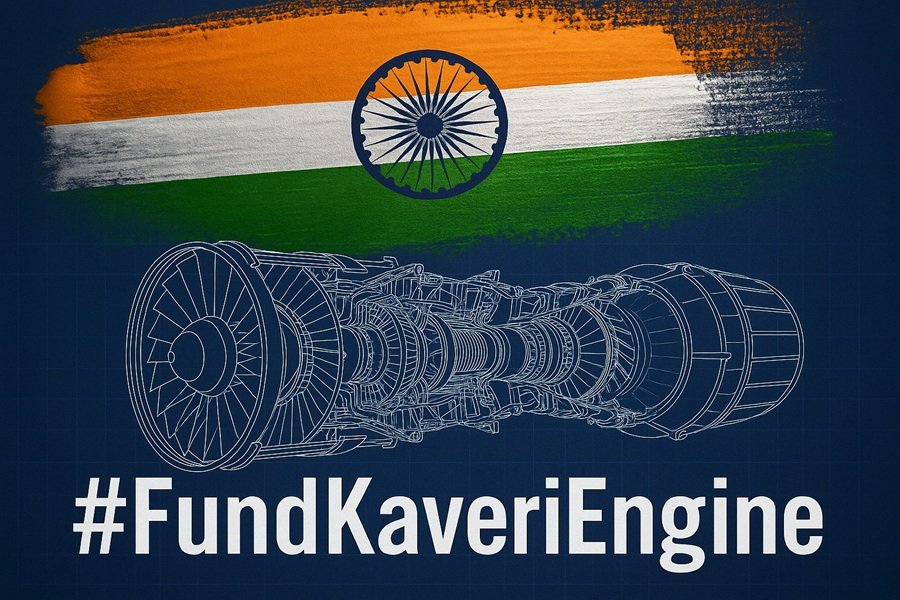
Introduction
The Kaveri Engine is one of India’s most ambitious indigenous defense technology projects, initiated by the Gas Turbine Research Establishment (GTRE) under the Defence Research and Development Organisation (DRDO). Designed to power India’s homegrown fighter aircraft, particularly the Light Combat Aircraft (LCA) Tejas, the Kaveri Engine symbolizes India’s aspirations for self-reliance in critical aerospace technologies.
However, despite over three decades of development, the engine has faced significant challenges and delays. In this article, we delve into the complete story of the Kaveri Engine — from its inception and technological goals to the hurdles faced, current developments, and its future potential in India’s aerospace defense ecosystem.
Read this: Fund Kaveri Engine: The National Movement for India’s Indigenous Jet Engine
Background: Why India Needed the Kaveri Engine
Strategic Importance of Jet Engine Development
Jet engines are among the most complex technologies in the world. Very few nations — primarily the United States, Russia, the UK, and France — have independently developed modern jet engines. For India, the dependence on foreign engines like the General Electric F404/F414 and Rolls-Royce Turbomeca was seen as a strategic vulnerability, especially for indigenous platforms like the LCA Tejas and future stealth programs like the Advanced Medium Combat Aircraft (AMCA).
Thus, developing the Kaveri Engine was more than a technological milestone — it was a step toward strategic autonomy in defense manufacturing.
Read this: Fifth-Gen Stealth Fighter Jet Plan Cleared: How It Will Give India A Strategic Edge
Kaveri Engine: Key Objectives and Specifications
Program Initiation and Timeline
- Initiated: 1986
- Executing Agency: GTRE (Bangalore)
- Collaborators: HAL, Bharat Heavy Electricals Ltd (BHEL), several academic institutions
- Initial Timeline: 10 years
- Initial Budget: ₹382 crore (later revised to over ₹2,800 crore)
Design Goals
- Type: Afterburning turbofan
- Thrust (Dry): ~52 kN
- Thrust (With Afterburner): ~81 kN
- Bypass Ratio: 0.16
- Compressor Stages: 3-stage fan + 6-stage high-pressure compressor
- Turbine Stages: 1-stage HP and 1-stage LP turbine
- Weight: ~1,200 kg
- Target Platforms: LCA Tejas, Unmanned Aerial Vehicles (UAVs), and future 5th-generation fighters
Developmental Milestones and Setbacks
1. Early Progress (1986–2000)
The Kaveri Engine development was initially seen as a 10-year project. During the 1990s, the design phase was completed, and various engine prototypes were created for testing. However, sanctions after the 1998 Pokhran-II nuclear tests severely restricted access to high-end aerospace materials and components, delaying the program.
2. Technical Challenges
Some of the major technical issues encountered:
- Inadequate thrust compared to contemporary fighter engines
- High turbine inlet temperatures without reliable cooling
- Reliability issues in afterburner performance
- High specific fuel consumption (SFC)
- Integration and weight problems with the Tejas airframe
By the mid-2000s, it became evident that the engine would not meet the required performance benchmarks to power the LCA Tejas.
3. Program Status by 2010
By 2010, about 9 full prototype engines and several core engines had been built and tested. However, the Indian Air Force (IAF) formally rejected the Kaveri for LCA due to its failure to achieve the required thrust-to-weight ratio and other key parameters.
Rebirth of the Kaveri: Re-Engineering the Vision
Transfer to Non-Fighter Roles
Although the Kaveri failed to meet fighter engine requirements, it found new life in non-afterburning variants. DRDO started exploring applications in:
- Unmanned Aerial Vehicles (UAVs): Especially the Ghatak UCAV, India’s stealth drone program
- Marine propulsion
- Power generation
Kaveri Derivative Engine for UCAVs
A dry (non-afterburning) variant of the Kaveri Engine has shown better performance stability. It is considered suitable for platforms like Ghatak, where the weight and size constraints differ from manned fighter jets. This revived version is often termed Kavya or Dry Kaveri.
International Collaborations
Safran-GTRE Partnership
In 2016–2017, the Indian government initiated discussions with Safran, the French aerospace giant (manufacturer of Rafale’s M88 engines), to co-develop a next-generation engine based on Kaveri technology. Key proposals included:
- Transferring core engine technologies
- Integrating a matured Kaveri derivative into the Ghatak UCAV
- Sharing materials and thermal management expertise
Although Safran offered significant assistance, the deal required a multi-billion-dollar investment from India. As of recent reports, discussions are ongoing, and collaboration may materialize under the India-France Strategic Partnership and Make in India initiatives.
Current Status (As of 2025)
Kaveri Engine – Where It Stands
| Component | Status |
|---|---|
| Core Engine Development | Complete |
| Afterburner Module | Performance Shortfall |
| Dry Engine for UCAVs | Under Integration (Ghatak UCAV) |
| Tejas Integration | Not Feasible |
| Marine/Industrial Variant | Under Study |
| International Collaboration | In Progress (Safran discussions) |
DRDO’s Statements
DRDO has stated that the Kaveri engine — though not suited for Tejas — is far from a failure. Its technology spin-offs are now being utilized in:
- Hypersonic vehicle programs
- Experimental gas turbines
- Future AMCA engine prototypes
Future Prospects
1. AMCA and Twin-Engine Deck Based Fighter (TEDBF)
India’s 5th-gen AMCA and TEDBF programs will require more powerful engines (~110–125 kN thrust class). Although not based on Kaveri directly, experience from the program will aid the co-development of advanced powerplants with global players like Safran or Rolls-Royce.
2. Indigenous Engine Ecosystem
Kaveri has led to the development of critical subsystems domestically:
- Turbine blade manufacturing
- Cooled single-crystal technologies
- FADEC (Full Authority Digital Engine Control) software
- Compressor and combustor modeling
These developments have boosted India’s domestic aerospace ecosystem, benefitting both defense and civilian sectors.
Conclusion: Is Kaveri a Failure or a Stepping Stone?
While the Kaveri Engine did not succeed in its original goal of powering the LCA Tejas, it has not been a complete failure. Instead, it served as a valuable R&D platform, giving Indian scientists and engineers vital experience in advanced propulsion systems.
Its technologies are now being reused, refined, and redirected toward unmanned systems, future fighters, and even civilian applications. With possible foreign collaboration and renewed funding under Atmanirbhar Bharat, the Kaveri project may yet fulfill its purpose — albeit in a different form.







